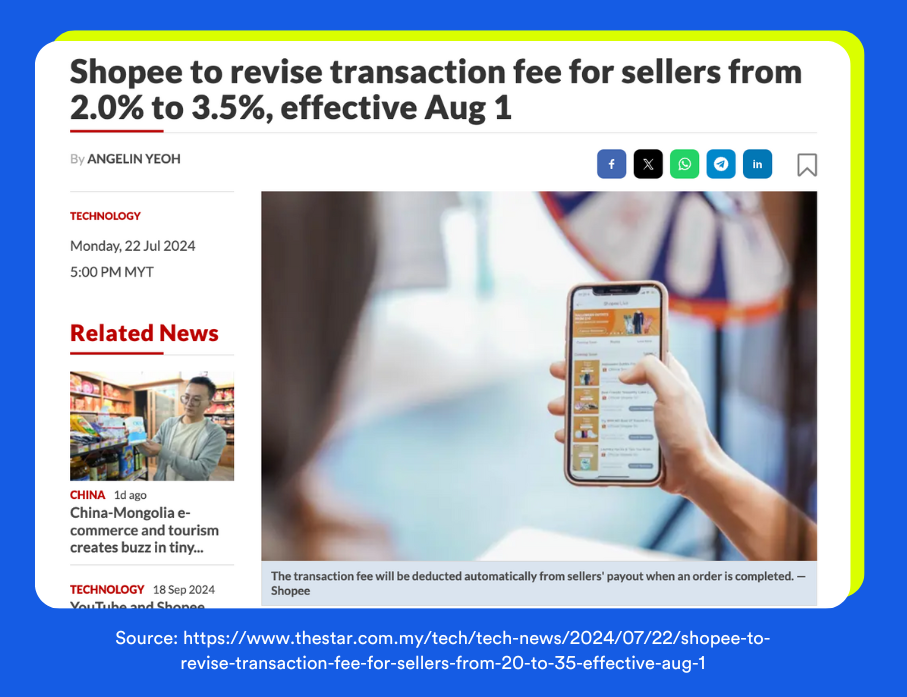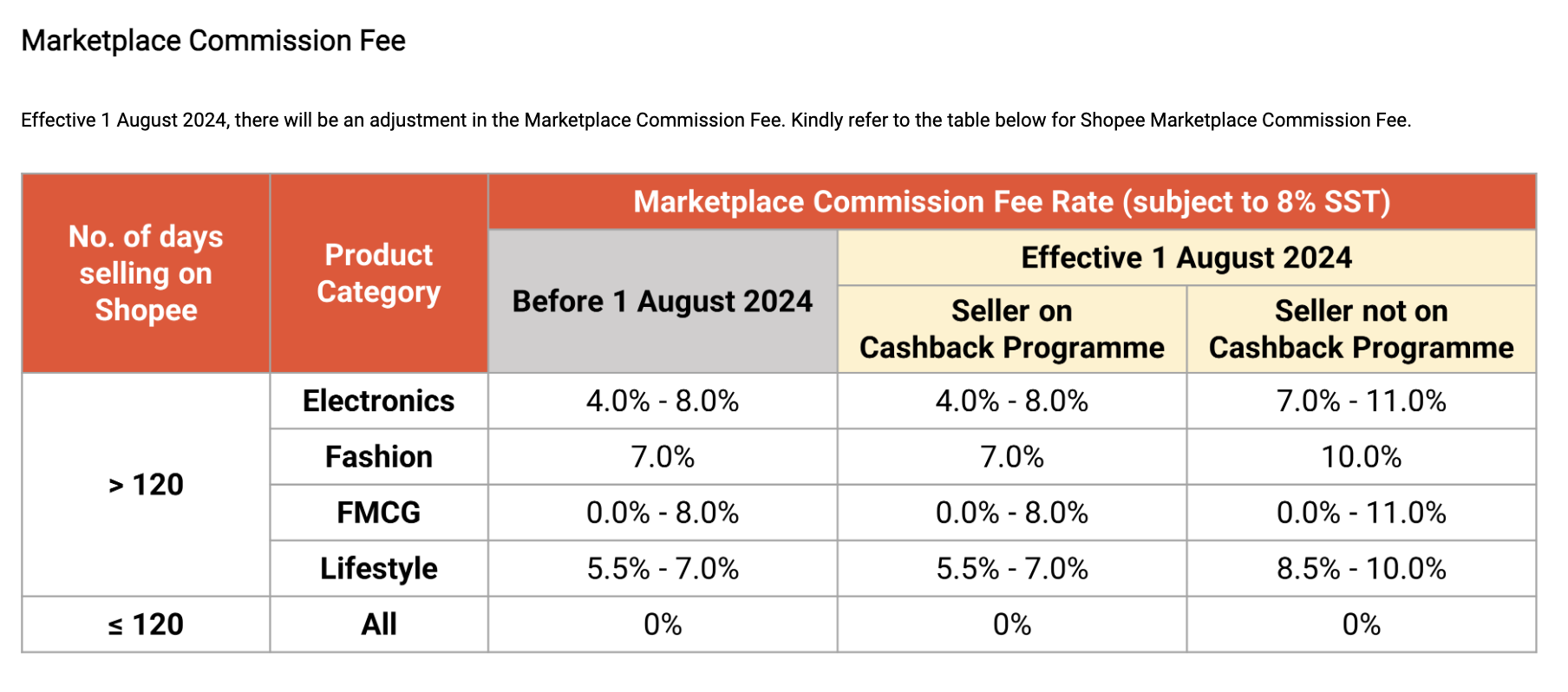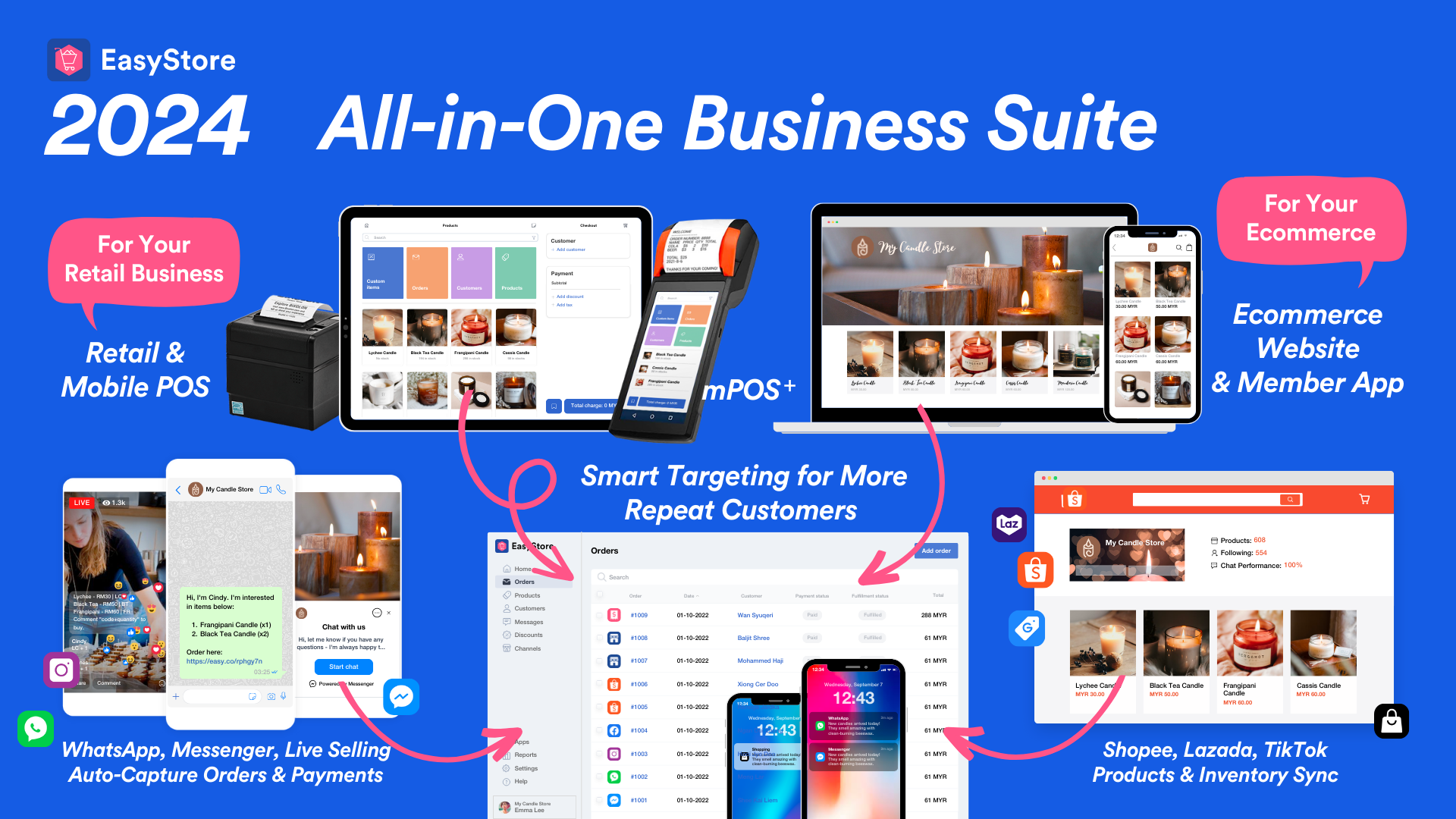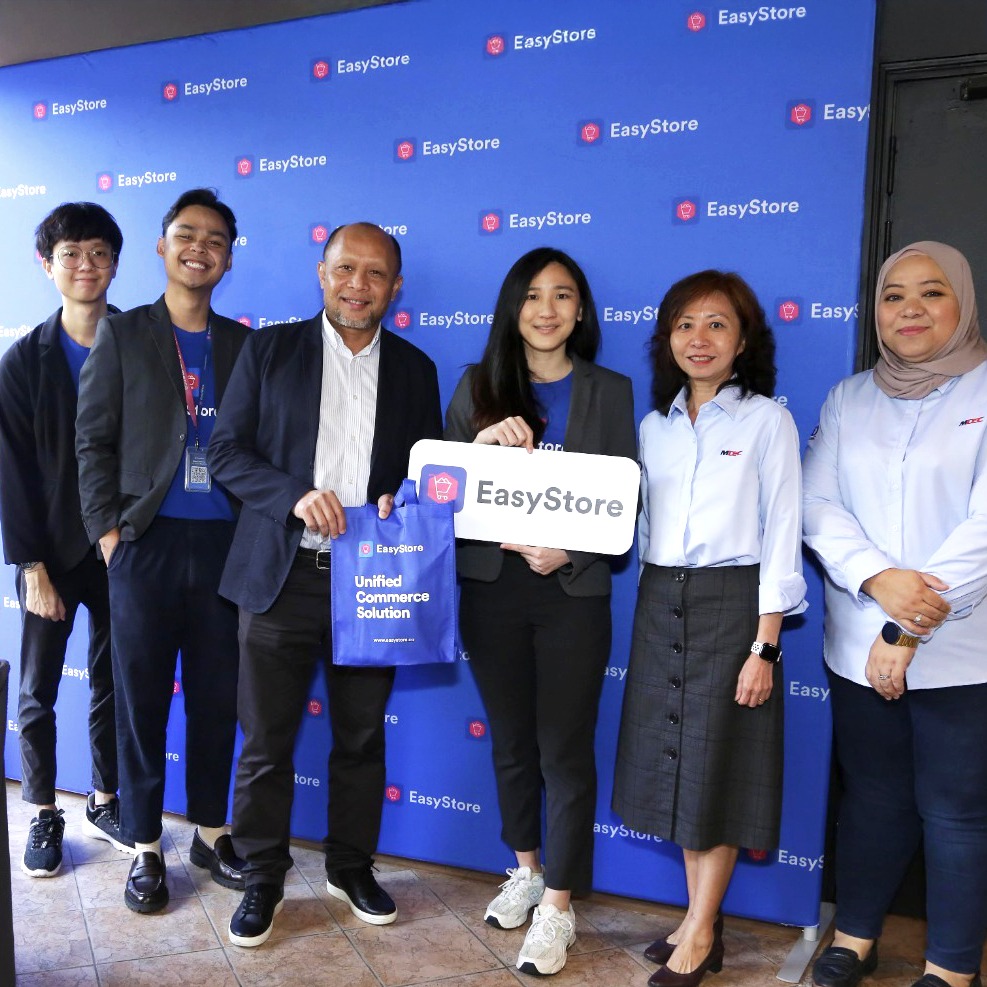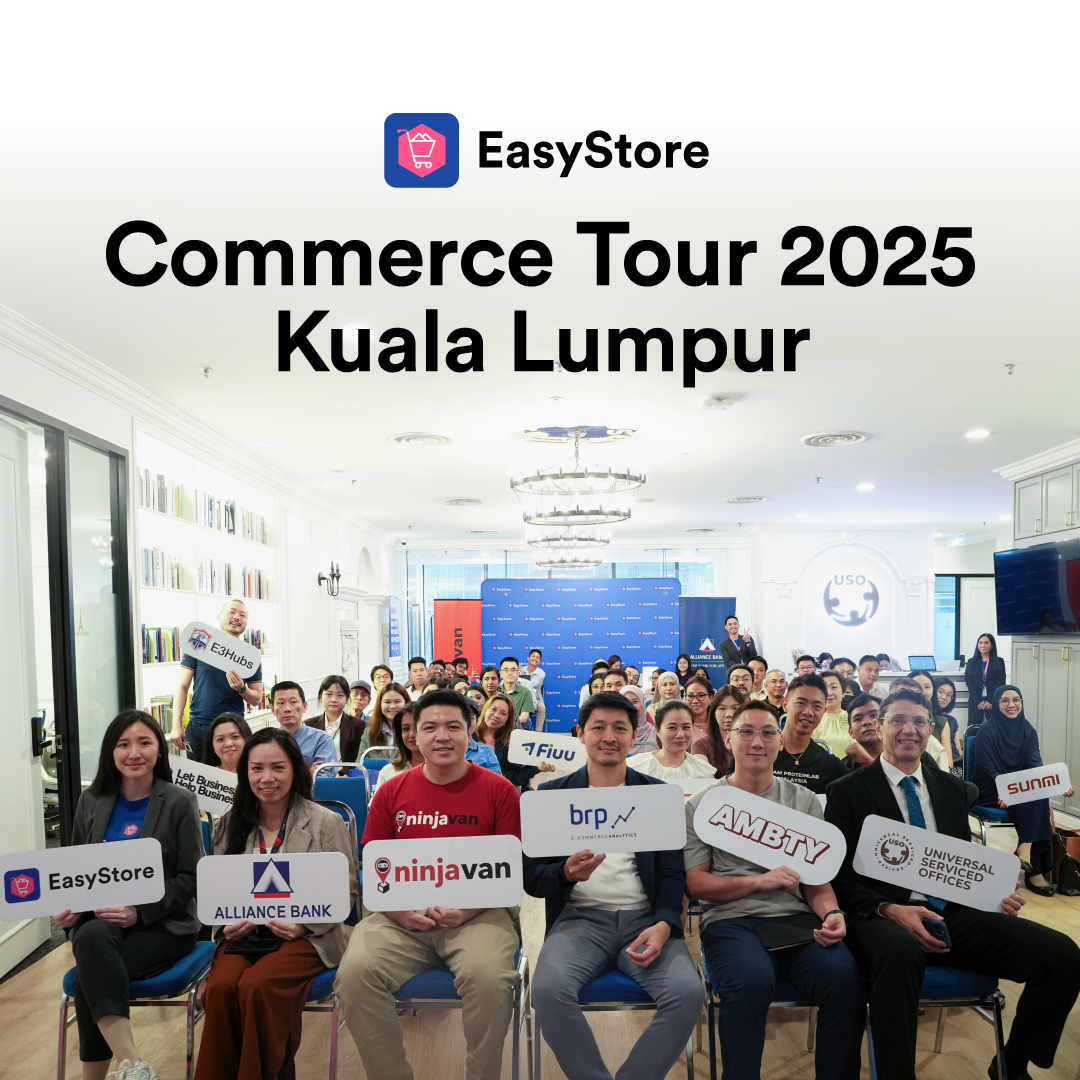How Rising Marketplace Fees in 2024 Are Shaping Malaysian Retailers’ Brand Strategies
By Kelie Wong · 1st October, 2024

Table of Contents
This blog was updated on 28 May 2025, for more information connect with our team: https://www.easystore.co/contact
How Rising Marketplace Fees in 2024 Are Shaping Malaysian Retailers’ Brand Strategies
In recent times, Malaysian retailers have been confronted with a major challenge: rising marketplace fees.
These increased costs—charged by platforms like Shopee, Lazada, and TikTok—directly impact how much retailers pay to sell online, squeezing profit margins and threatening long-term sustainability.
For customers, this often means higher prices, as businesses attempt to pass on part of the added cost.
So how are Malaysian retailers responding to these changes?
6 Common Types of Marketplace Fees
Before we dive into how retailers are adapting, let’s explore six typical marketplace charges sellers may face:
Transaction Fees: A percentage charged on each sale made through the platform.
Commission Fees: A fixed percentage of the sale price retained by the marketplace.
Listing Fees: Costs for listing products, either per item or per batch.
Payment Processing Fees: Charges for handling payments, often flat or percentage-based.
Shipping Fees: Delivery costs, which may be borne by sellers depending on platform policies.
Fulfillment Fees: Charges for warehousing, packing, and shipping when using marketplace logistics.
Marketplace Fee Updates (As of September 2024)
Major marketplace platforms have recently revised their fee structures:
Shopee
Transaction fee increased from 2% to 3.5%
Commission fee adjustments for Electronics, Fashion, FMCG, and Lifestyle categories effective 1st August 2024.
Lazada
Transaction fee increased from 2% to 3.5%
Commission changes for Electronics, Fashion, FMCG, General Merchandise, and Digital Goods effective 15th August 2024.
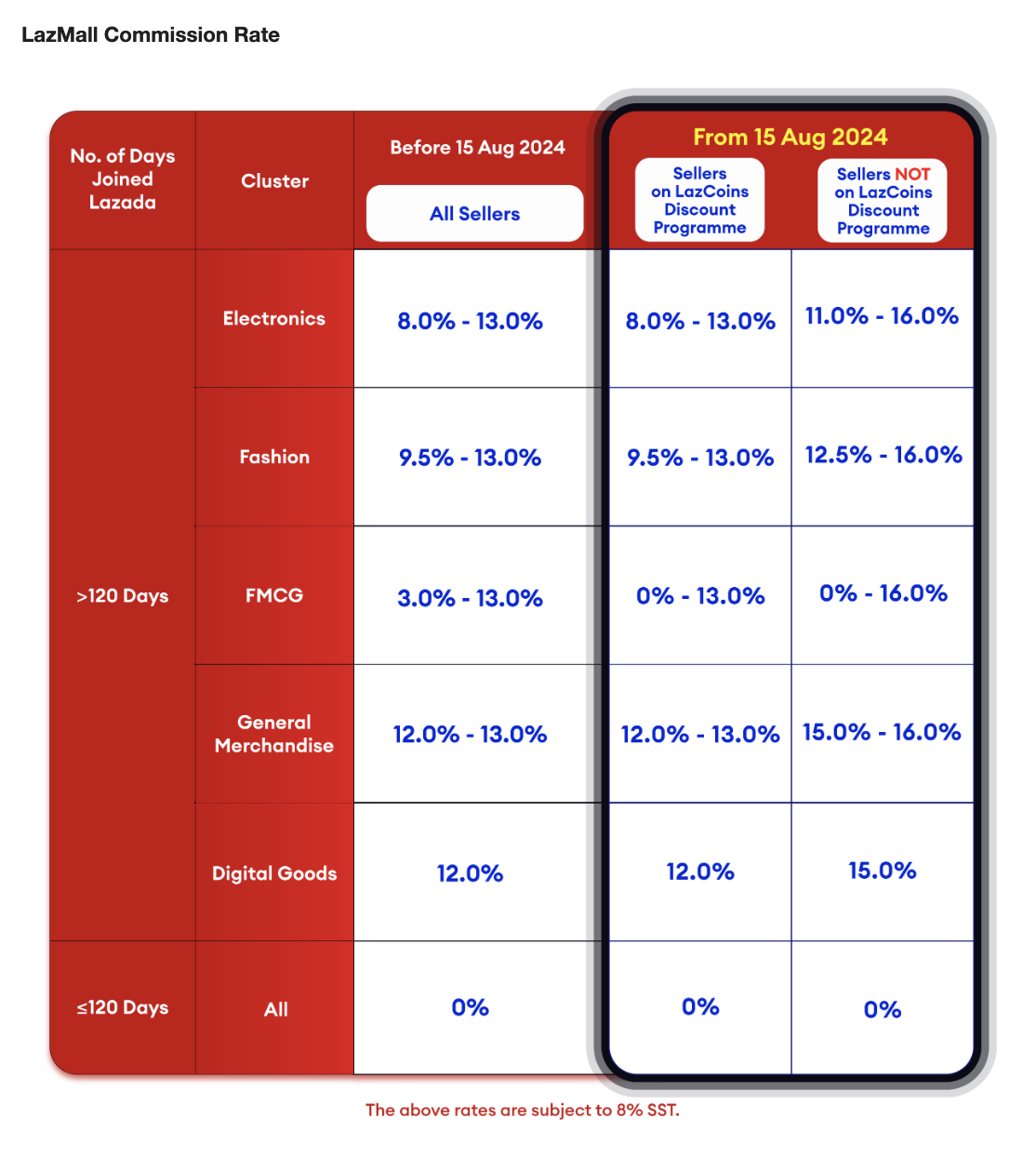
TikTok
Transaction fee increased from 2.16% to 3.78%
Commission adjustments for Electronics, Fashion, and FMCG effective 5th September 2024.
How Retailers Are Adapting
As these fees continue to rise, retailers are reassessing their strategies.
While some may consider raising product prices to offset costs, this can negatively affect the customer experience and brand perception.
We spoke to three EasyStore merchants—Westfield, Kiss and Tell, and Spenco—who have long been active on marketplaces.
Here's how they’re adapting:
1. Westfield
Known for their durable safety boots, workwear, and equipment, Westfield has a strong online presence with 45k Shopee followers and a 4.9-star rating from over 37.5k reviews.
“We can't control the platform fees, but what we can control is how memorable our brand is. We're focused on being the kind of brand customers come back to.”— Richard, Founder of Westfield
2. Kiss and Tell
Established in 2012, Kiss and Tell offers stylish and comfortable innerwear for women through both online and offline channels.
“Shopee is a great customer acquisition channel, but our focus remains on our own online store.”— Michelle, Founder of Kiss and Tell
3. Spenco
Specializing in therapeutic insoles, Spenco operates 11 outlets across Malaysia.
Their customers often start in-store and later repurchase online.
“Shopee helps us stay accessible, but it’s our brand that keeps customers coming back.”
Strategies to Navigate Rising Fees
These retailers are finding smart ways to respond, highlighting a clear shift in strategy:
1. Prioritizing Brand-Centric Experiences
Marketplaces are excellent for discovery, but the real value lies in owning the customer relationship.
Increasingly, retailers are directing shoppers to their own websites where they can offer:
Personalized promotions
Deeper brand storytelling
Greater control over customer experience
Tactics like including website discount cards in product packaging help retailers shift customers toward direct engagement.
2. Personalization Is the New Human Touch
Modern consumers want personalized, thoughtful shopping experiences—not generic product listings.
On their own channels, brands can:
Recommend related or frequently repurchased items
Build dynamic product feeds tailored to user behavior
Track and act on customer data for better-targeted marketing
These efforts lead to more meaningful engagement and stronger customer retention.
3. Competing on Experience, Not Just Price
Although price matters, today’s shoppers also value convenience, support, and a smooth omnichannel experience.
On marketplaces, customer service can feel fragmented.
Queries often go through the platform, and offline staff may lack context to assist. This disconnect can frustrate loyal customers.
By ensuring alignment across all touchpoints—retail outlets, customer service, and online presence—brands can deliver seamless, trusted experiences that build long-term loyalty.
The Role of Unified Commerce in This Shift
To reduce reliance on marketplaces, more Malaysian retailers are turning to unified commerce solutions like EasyStore.
EasyStore empowers over 50,000 brands to implement Unified Customer Experiences (UCX) across:
Online stores
Marketplaces
Retail outlets
Social media
This unified approach enables retailers to maintain consistent product, pricing, and service experiences, while gaining full control over customer data and communication.
It’s not just about selling on multiple channels—it’s about creating a connected brand experience wherever the customer shops.
Conclusion
Marketplace fee hikes present significant challenges, but they’ve also become a turning point for many Malaysian retailers.
By focusing on branding, customer relationships, and channel ownership, retailers are not just surviving these changes—they’re thriving.
With the right tools and strategies, retailers can future-proof their businesses and turn rising costs into opportunities for deeper customer engagement and stronger brand loyalty.
Make Customers Love Buying From You
EasyStore empowers your brand to prioritize customers and enhance their experience, creating a unified customer experience (UCX) that makes customers love buying from you.
Over 50,000 brands have grown their businesses by embracing unified customer experiences (UCX) strategy through EasyStore across multiple sales channels - online store, retail outlets, marketplaces, and social media, ensuring consistency in product and service offerings for a seamless shopping journey.
Embrace UCX and redefine your business success today
Discover how UCX can elevate your customer engagement with a truly unified journey for your customers, streamline operations, and drive growth across all channels.
Contact Us